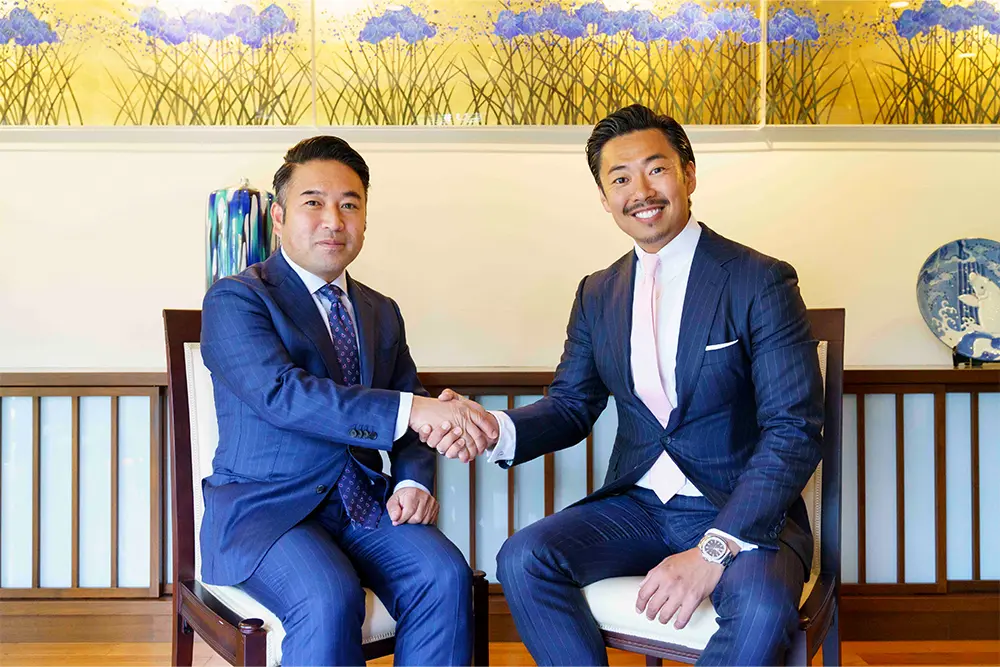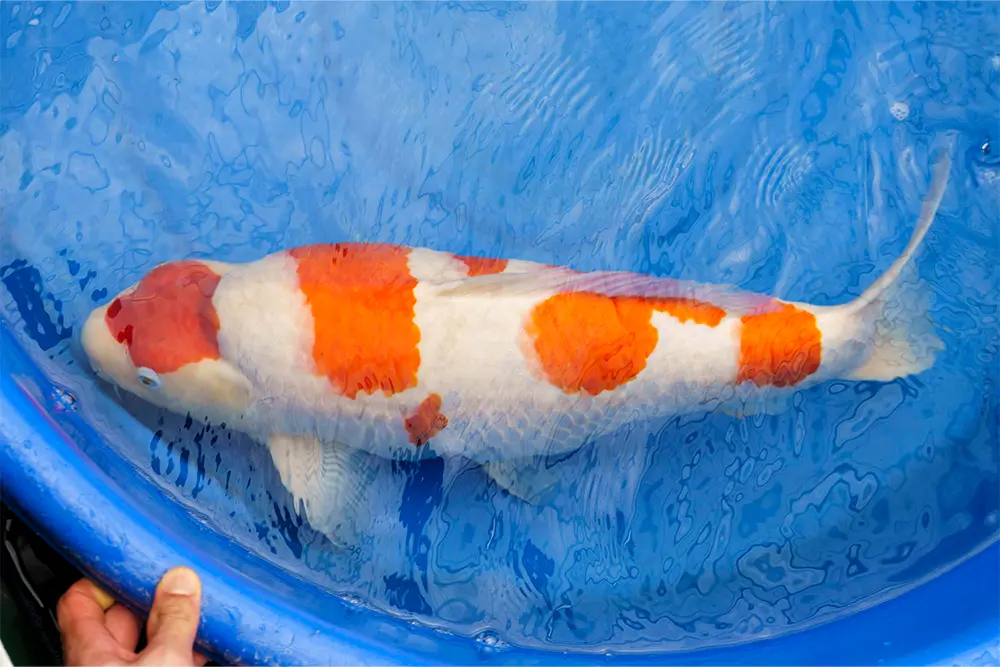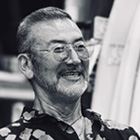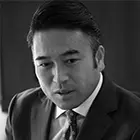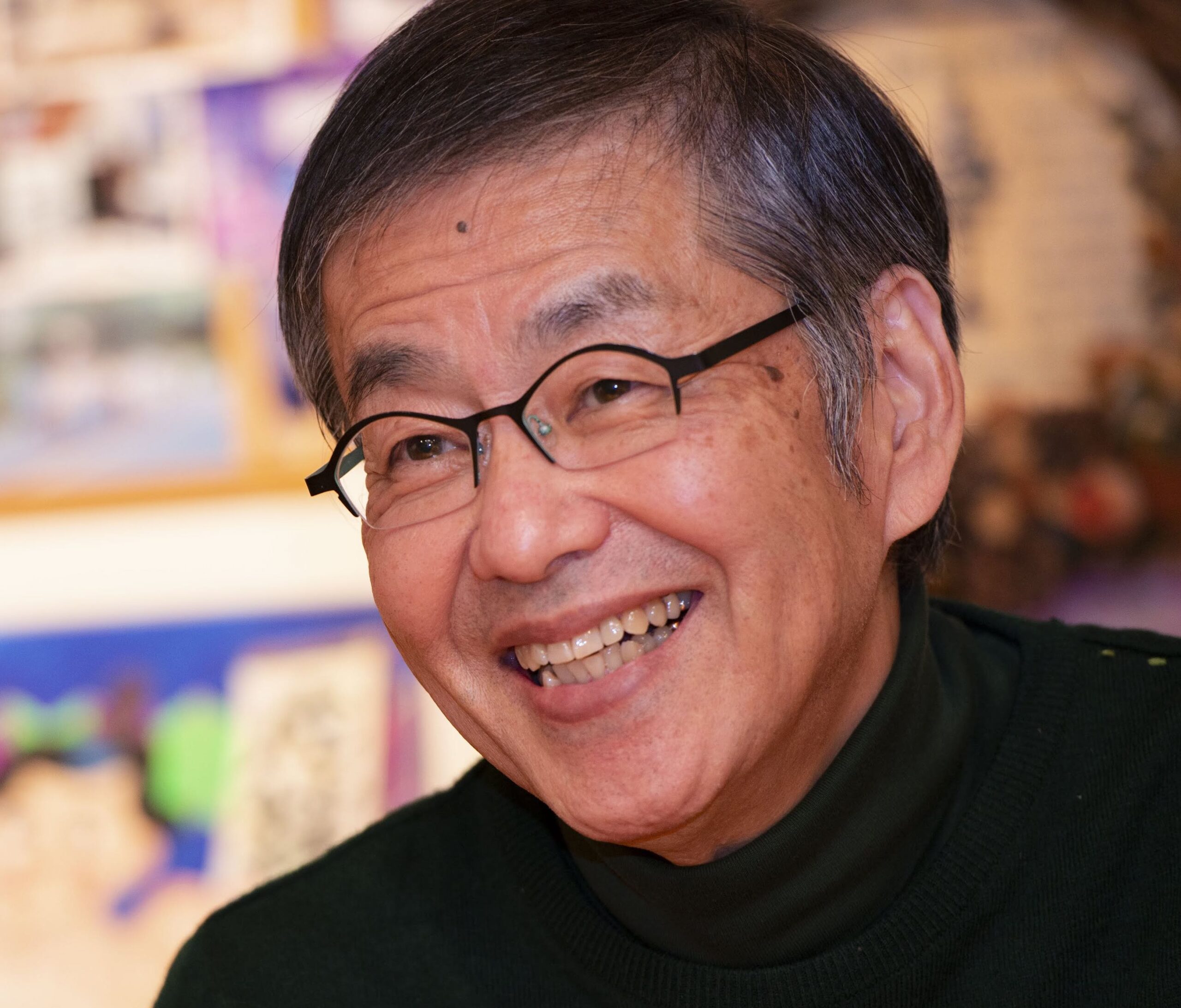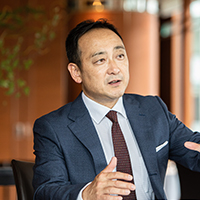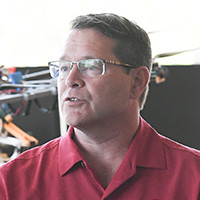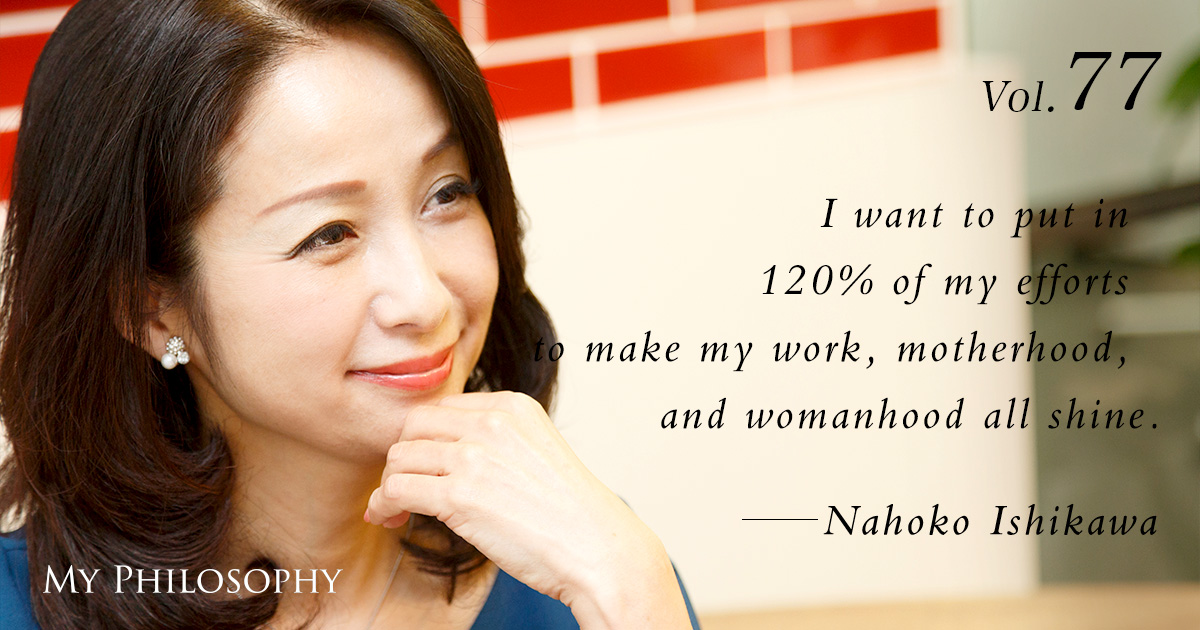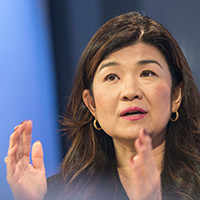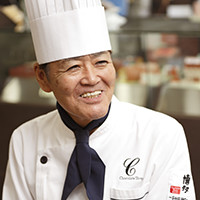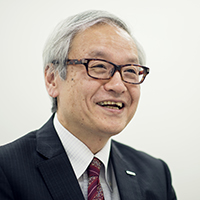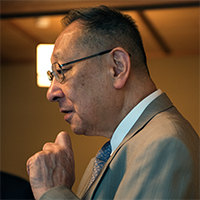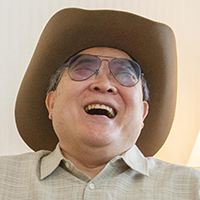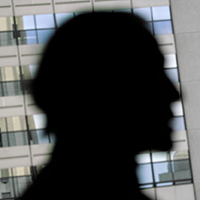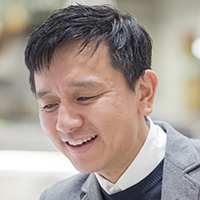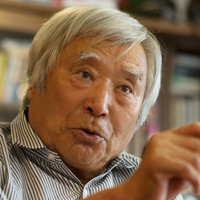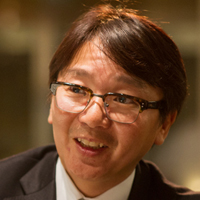
Nishikigoi, often referred to as "swimming artworks" or "swimming jewels," are increasing in popularity not just in Japan but also internationally. It is not uncommon for foreign enthusiasts to participate in auctions, with some koi being sold for tens of millions of yen. Mr. Kentaro Sakai is the breeder behind a koi that sold for a record-breaking 203 million yen. His breeding techniques, sparing no effort or time, are highly respected in the industry. Mr. Sakai shared with us his passion and philosophy towards the care of koi.
Profile
Vol.107 Vol.107 Kentaro Sakai
President and CEO of Sakai Fish Farm Co., Ltd.
Born in 1974 in Mihara City, Hiroshima Prefecture, Kentaro Sakai began his international experience at the age of 20, spending two years in the United States. While attending an English language school, he worked at a koi dealership. In 1996, he joined Sakai Fish Farm, a company with a 120-year history and a pioneer in the scientific breeding methods within the koi industry. He has led the company to achieve a total of 13 Grand Champion titles at the "All Japan Combined Nishikigoi Show" by 2024. The "S Legend," which won the Grand Champion title in 2017 and 2019, is considered one of the most beautiful koi in recent years. Kentaro Sakai’s hobby is cooking.
Due to the entry of foreign bidders, auction prices have soared.

Amid the COVID-19 pandemic, we were unable to hold koi shows or host auctions at our farm for about three years. Last year (as of 2021), we conducted our first online auction. Due to the strong brand recognition of Sakai Fish Farm and the accumulated trust from our customers, the bids were quite high. About six years ago, the average price for a Grand Champion koi was around 15 million yen, and it was mostly Japanese buyers at the auctions. Recently, however, with the entry of foreign bidders, the bidding for high-quality koi has escalated significantly. Our koi, “S Legend,” was sold to a foreign buyer in 2019 for 203 million yen, and around that time, a two-year-old koi was auctioned for 30 million yen. Prices have soared since then, and the regular clientele could no longer keep up. However, those who started buying around that time consider these high prices normal. At our recent auction, a two-year-old koi was sold for 60 million yen. The buyer had a budget of 40 million yen but ended up competing with the foreign buyer who purchased the “S Legend” for 203 million yen, and the bidding heated up, eventually being won out of prestige. One advantage of online auctions is that there is time to think after entering a bid. In a live auction, prices escalate quickly, and when buyers get the information, “This is the current price!,” they tend to bid without much thought.
Teamwork is the key to produce good koi

Despite the growing popularity of Nishikigoi and increasing demand, the supply has not expanded accordingly. Koi production cannot be easily scaled up. Even if production were increased, it does not guarantee that the desired quality of koi will be produced. Just because we had good koi one year does not mean we will have good koi the next year; for us producers, koi breeding is truly a gamble every year. We never know what kind of fry will result from the pairing of specific males and females until we try. It really comes down to luck. Each year is a critical challenge, so there is absolutely no room to cut corners in preparation and care.
The production of Nishikigoi starts with collecting eggs. At this stage, we cultivate daphnia, a type of feed, in the pond where the fry will be placed. We need to time the spawning to match the growth of the daphnia. If the fry ponds are not properly managed, the growth of the fry can be delayed, and they can become susceptible to diseases.
I always remind our staff that “we are one team.” For example, in a three-star restaurant, the head chef does not cook everything from scratch; the prep work is done by the staff. If they cut corners during the prep work, the final dishes will not turn out well. It’s the same with koi. While I handle the final preparations for the koi shows, if the employees have cut corners in the earlier stages, we cannot produce quality koi.
Pursue it to the utmost limit.

In my view, the key to successful Nishikigoi production lies in delving deeper into the finer details and continuously refining our processes. For example, we determine the amount of feed based on the weight of each individual fish. Suppose there are 10 koi each weighing 10 kg; the total weight would be 100 kg, and the maximum feeding rate is 1% of their total weight. We increase the feeding rate gradually by 0.1% increments up to 0.5%. Beyond that point, we adjust the amount by increments of 0.05% while closely monitoring the koi’s condition. A simple increase might harm their internal organs. Any koi that become distressed are moved to a separate pond and put on a different diet until they recover, then we gradually increase their feed as much as they can handle. No other place goes to these lengths in their feeding practices. We also continually refine our feeding methods every year to find even better techniques.
Although we share how we make our feed on the web, people often worry whether it’s wise to reveal what could be seen as corporate secrets. However, just seeing the process doesn’t mean it can be replicated. Our handmade feed involves a kneading process that depends on the tactile skills and intuition of the staff, which cannot be mimicked by others or replaced by machines. My ability to assess when to change the water in the ponds or to determine the quality of the water also comes from years of experience and instinct. When the time comes to pass the baton to my son, whether he possesses this sense will be a significant challenge.
However, it’s precisely because we go to these lengths that we achieve the track record and success in competitions, and gain recognition as a brand. At last year’s online auction, a two-year-old koi fetched a record 83 million yen, a price I was confident to start the bidding at 10 million yen due to the quality of the fish.
What is required is the capability in production, breeding, and management.

Our family began breeding Magoi carp in the latter part of the Meiji era, and I represent the fifth generation. It was my grandfather who initiated the production of Nishikigoi, but he was an alcoholic and did not work much. My father had to work every day right after returning home from high school. During his time, a breed called “Shiro Utsuri” became popular, and with the capital raised from that success, he went to Niigata and acquired two “Kohaku” carp, which also turned out to be a hit—these became our parent carp. From here, we began to produce what you might call hit products, allowing us to invest in better facilities. This cycle of success and reinvestment has defined Sakai Fish Farm.
I have two sisters, but being the only son, I felt a responsibility to continue the family legacy. In the late 90s, when I was 20, I went to Seattle to study English and work at a koi dealership to prepare for my future. The sixth generation will be continued by my eldest son, but I want him to see and learn from different worlds before taking over, which is why he is currently training at a famous sushi restaurant in Tokyo. Sushi chef training is a rigorous world, and I hope he gains various experiences there that he can bring back to koi breeding.
There isn’t much left to change in our methods of koi production. The important thing now is to continuously delve deeper into every single aspect. I want to instill in him the spirit of meticulous attention to detail, such as the temperature of the sushi rice and fish—similar “spirit of attention,” to what is demanded in koi production.
Not only do we produce koi, but we also take in and care for customers’ koi. Therefore, proficiency in production, breeding, and management is essential to run our company. No matter how good the koi we produce, without the skills to properly raise them, they would be practically worthless.
A Title Worth Over 200 Million Yen

I focus solely on breeding, continuously refining new methods of koi care. I think it would be beneficial if the public could see our methods and understand why the prices are so high. The value of koi lies in their rarity. At our facility, we hatch 32 million koi annually, but we discard 97% of them after the initial selection. At 60 days old, we perform a second culling, discarding about two-thirds of those remaining. Eventually, I personally select approximately 500,000 koi. From this select group, we price the top-tier two-year-old at 10 million yen.
On a side note, our facility has a memorial tower for koi, where ‘S Legend’, which was auctioned for 203 million yen, rests. Before the All-Japan Nishikigoi Promotion Association’s 50th anniversary show in 2019, ‘S Legend’ was so ill with a bacterial infection in its viscera that we nearly couldn’t exhibit it. We had to drain the abscess with a syringe and managed to enter it in the competition. It swam on Friday, won the grand championship, but sadly passed away on Sunday. Despite being sold for 200 million yen, we made no profit as it died within a year’s warranty, and I should have refunded the 100 million yen deposit. However, I settled the account by providing koi worth 100 million yen. Still, I have no regrets. The title alone was worth more than 200 million yen. Just having the name ‘Sakai Fish Farm’ engraved in history is enough for me.
My goal moving forward is to continue winning Japan’s top awards and consistently producing results. Moreover, I aim to surpass the record price of 203 million yen that our farm has set.
The Sakai family has led the Nishikigoi industry for 120 years, honoring tradition while pursuing innovation. Our 11 grand championships at the All Japan Combined Nishikigoi Show are a testament to the dedication of our ancestors and the unwavering support of koi enthusiasts. Most recently, we achieved the grand championship at the 54th All Japan Combined Nishikigoi Show, an honor I am eager to share with all of you. We will continue to embrace challenges and contribute to further advancements in the Nishikigoi industry. We deeply appreciate your ongoing support.
Kentaro Sakai President and CEO, Sakai Fish Farm Co., Ltd.


President Kentaro Sakai, congratulations on your grand championship win at the 54th All Japan Combined Nishikigoi Show. It is clear from this interview that the passion and rigorous daily efforts Sakai Fish Farm has dedicated to Nishikigoi breeding have culminated in this honor. Your innovative approaches, such as venturing into online auctions, rigorous quality management, and emphasis on teamwork, have underpinned your success.
These achievements are a testament to the high regard in which Sakai Fish Farm’s expertise and efforts are held, attracting attention both domestically and internationally. I eagerly anticipate further advancements from Mr. Sakai and his team and expect new achievements in the Nishikigoi industry. I am confident that Sakai Fish Farm will continue to bring joy to many people and contribute to the industry’s development.
“My Philosophy” Editor-in-Chief, DK Sugiyama
Photography Location: Sakai Fish Farm Co., Ltd. Edited by DK Sugiyama




